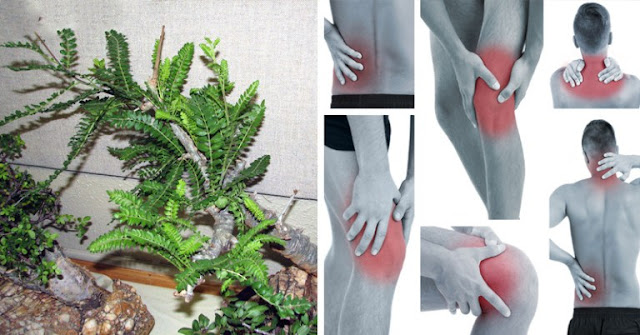Ibuprofen is widely used by athletes as it helps them get through the aches and pains caused by their intense training. However, athletes are not the only ones who rely on non-steroidal anti-inflammatory drugs (NSADs) for pain relief. As a matter of fact, over 30 million Americans use NSAIDs, such as aspirin, naproxen, and ibuprofen, to treat muscle cramps, headaches, sport injuries and chronic conditions like back pain, neuropathy, and arthritis.
The main cause of this pain is the inflammation, a defensive response which leads to swelling in the tissues. NSAIDs reduce pain by inhibiting inflammation-causing enzymes. However, the problem with these drugs is that they cause some serious side effects, such as bleeding in the stomach, kidney damage, heart attack, strokes, increased risk of ulcers, and hormonal imbalance. “I wouldn’t take them on a regular basis for more than a few months, if at all,” says Jonathan Wright, MD, medical director of the Tahoma Clinic in Washington. “Some individuals might even see adverse effects after just a few days.”
The good news is that there are natural remedies available. They are all-natural, safe to use, and extremely effective in reducing inflammation and soothing pain. Among them are:
1. WHITE WILLOW BARK AND FEVERFEW
White willow bark is extremely effective in treating headaches, as it contains a compound (salicin) whose effects are very similar to the ones of aspirin. It reduces inflammation like aspirin, but it is much gentler. It is recommended to take 120-240 mg standardized salicin every 3-4 hours and never give it to children due to the risk of Reye`s syndrome.
Feverfew provides a long-term relief and it helps prevent headaches. It has the ability to relax blood vessels in the brain, which in turn prevents constriction, the main cause of migraines. According to a recent study on migraines, 16-week treatment with feverfew extract decreases migraine attacks from five a month to fewer than three a month. This herb prevents migraines rather than treating ones that have already developed. It is recommended to take 100-200 mg on a daily basis. Make sure the standardized form contains at least 0.2% of parthenolide, its active ingredient. Note that it takes 1-2 months to see the benefits.
2. BOSWELLIA
Boswellia, also known as frankincense, soothes both minor and chronic pains. Its active ingredients reduce the production of inflammatory compounds which are involved in many chronic diseases, such as rheumatoid arthritis. Opt for a formula standardized to 60% boswelic acids. You should take 750 mg on a daily basis in three divided doses.
3. CURCUMIN
Turmeric contains curcumin, an active ingredient which inhibits inflammatory properties and improves body`s ability to fight inflammation. It has been scientifically shown that curcumin soothes chronic pain caused by rheumatoid arthritis and many studies done on animals have shown that it helps prevent heart disease, diabetes, and Alzheimer`s disease. Take 400-600 mg of curcumin three times on a daily basis. It is recommended to take it along with bromelain in order to increase its bioavailability. Bromelain is an anti-inflammatory enzyme which is naturally found in pineapples.
4. GINGER
Ginger contains enzymes which stop the production of inflammatory compounds. According to Paul Anderson, ND, at Bastyr University in Seattle, “the amount of ginger in a spice, tea, or candy isn’t going to provide much pain relief, no matter how good it tastes.” For acute pain, take 2 grams of ground dehydrated ginger on a daily basis. For chronic conditions, reduce the intake to a gram of it daily divided into three doses.
5. ARNICA
Arnica has been long used for medicinal purposes. It is obtained from the yellow arnica flower which grows in the alpine meadows of Europe. It contains sesquiterpene lactones, compounds which boost immunity and reduce inflammation.
According to a 2007 study done on more than 200 people with osteoarthritis, topical application of arnica soothes pain and restores joint functions, just as ibuprofen does. It can be also used to treat acute injuries, including bruises, strains, sprains, and postoperative healing. For that purpose, apply arnica gel or cream 3-4 times on a daily basis. For a one-two punch, use arnica homeopathically, using remedies of 6c, 12c, or 30c potency, 3 pellets under the tongue, 3 times on a daily basis.
6. OMEGA-3 FATTY ACIDS
These are critical for long-term pain reduction,” says Wright, “because your body breaks omega-3 fatty acids down into anti-inflammatory compounds.” Moreover, lack of omega-3 fats in your diet will make you more prone to pain and greater inflammation in cases of sickness and injuries.
Omega-3s are naturally found in hempseed, flaxseed and cold-water fish like sardines, mackerel, and salmon. They also come in the form of supplement. For maintenance, take 1,000-2,000 mg on a daily basis. For chronic pain, increase the intake to 2,000-4,000 mg daily. You should take 400 IU of vitamin E daily too, as it prevents oxidization of omega-3s in the body and attacks on the healthy cells.
7. DEVIL`S CLAW
Devil`s claw is native to South Africa and it is actually a fruit covered with little hooks which snag into the skin and cause pain. Interestingly, when used as a remedy it reduces pain and recent studies show that it is very effective in reducing back pain and arthritis.
According to a 4-month study done on 120 people with knee and hip osteoarthritis, devil`s claw reduced pain and improved function, just as osteoarthritis medications do. In addition, other studies on this herb show that it is effective in reducing low-back pain.
Wright says that devil`s claw contains active ingredients which have powerful pain-relieving and inflammation-causing properties. Some of those compounds include iridoid glycosides, especially harpagoside. It is recommended to take 50-100 mg of harpagoside on a daily basis or 400mg dried devil`s claw.
Note: Given the fact that devil`s claw stimulates the production of gastric acid, people with stomach ulcers should consume their doctor before consuming it.
via besthealthyguide.com

No comments:
Post a Comment